What are the long-term trends for multiple jobholders in the US? The Bureau of Labor Statistics has two decades of historical data to enlighten us on that topic, courtesy of Table A-16 in the monthly Current Population Survey of households.
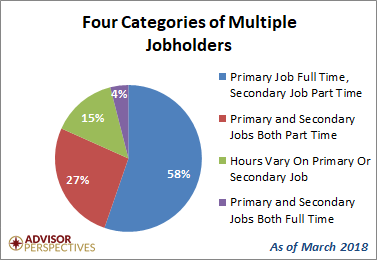
At present, multiple jobholders account for just 5.0 percent of civilian employment. The survey captures data for four subcategories of the multi-job workforce, the current relative sizes of which are illustrated in a pie chart. The distinction between “primary” and “secondary” jobs is a subjective one determined by the survey participants.
Note: Not included in the statistics are the approximately 0.23% of the employed who work part-time on what they consider their primary job and full time on their secondary job(s).
Let’s review the complete series to help us get a sense of the long-term trends. Here is a look at all the multiple jobholders as a percent of the civilian employed. The dots are the non-seasonally adjusted monthly data points, which are quite volatile, and a 12-month moving average to highlight the trend. The moving average peaked in the summer of 1997 and then began trending downward. It is now at 4.9%, and the latest monthly data point is 5.0%.
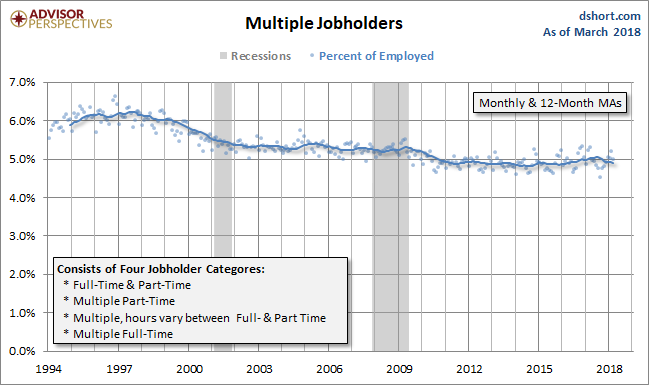
The next chart focuses on all four subcategories referenced in the pie chart. The trend outlier is the series illustrated with the red line: Multiple Part-Time Jobholders. Its trough was in 2002 and has been trending higher in early 2007, long before Obamacare. At about the same time we also see a steepening decline in the trend for the employed whose hours vary between full- and part-time for either their primary or secondary job.
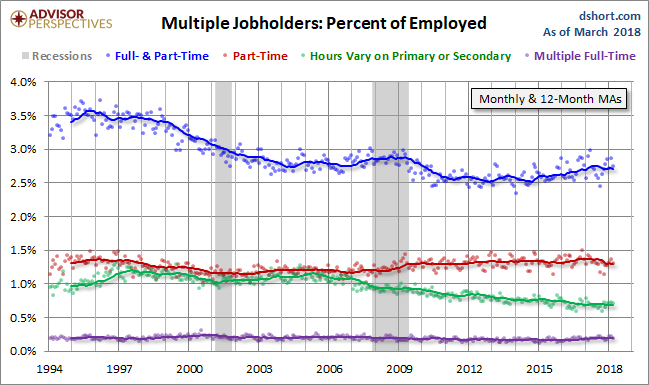
Here is a closer look at the two cohorts that have changed the most since the mid-2000s. We’ve rescaled the vertical axis to give us a clearer view of the trends.
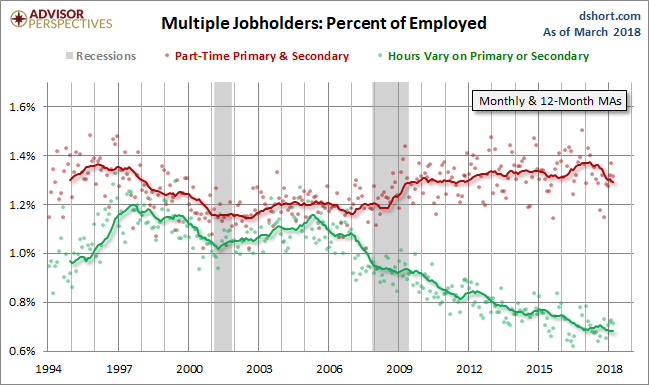
The Great Recession noticeably increased the percentage of multiple part-time jobholders. This metric leveled out in 2010 and 2011, but it has subsequently resumed a slow upward trend. It seems likely that the downward trend for the cohort whose hours vary for their primary or secondary job (the green line) has to some extent contributed to the rise of exclusively part-timers (the red line).

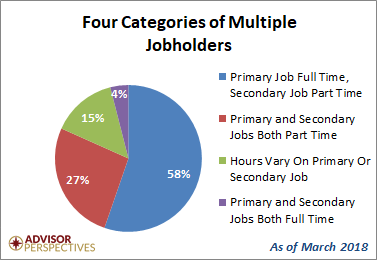







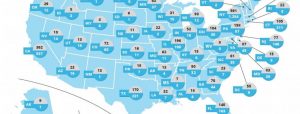
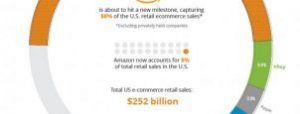



No Comments